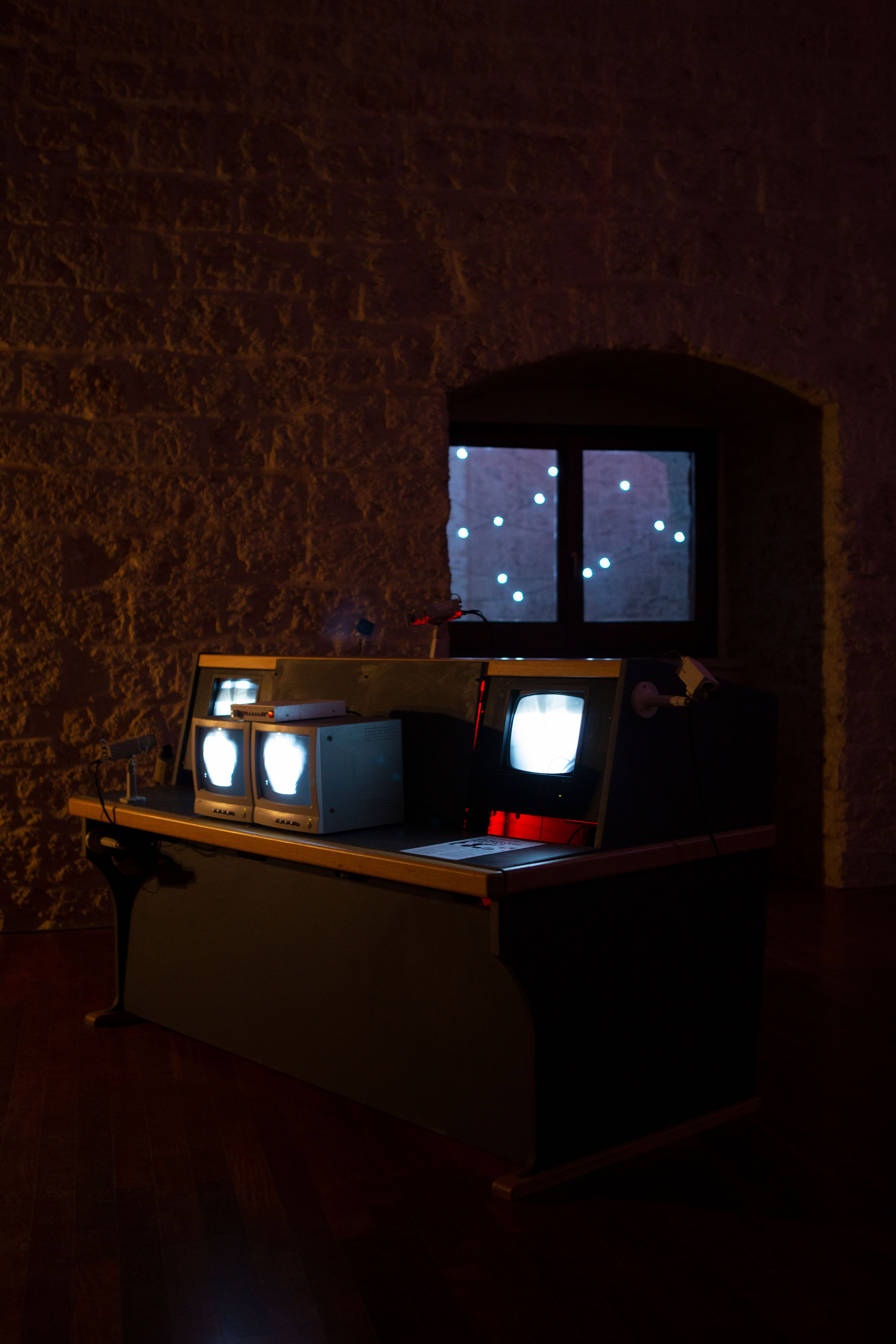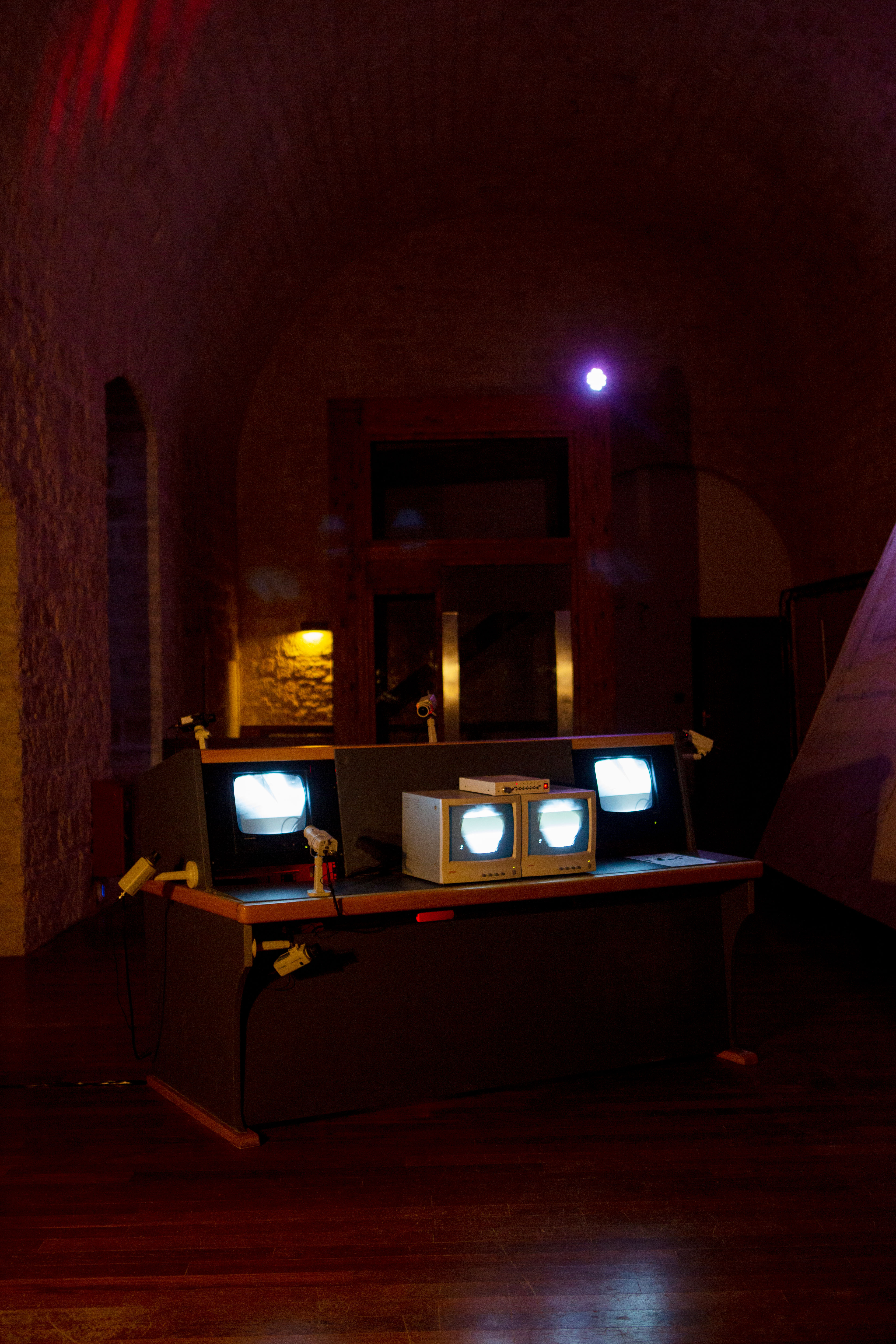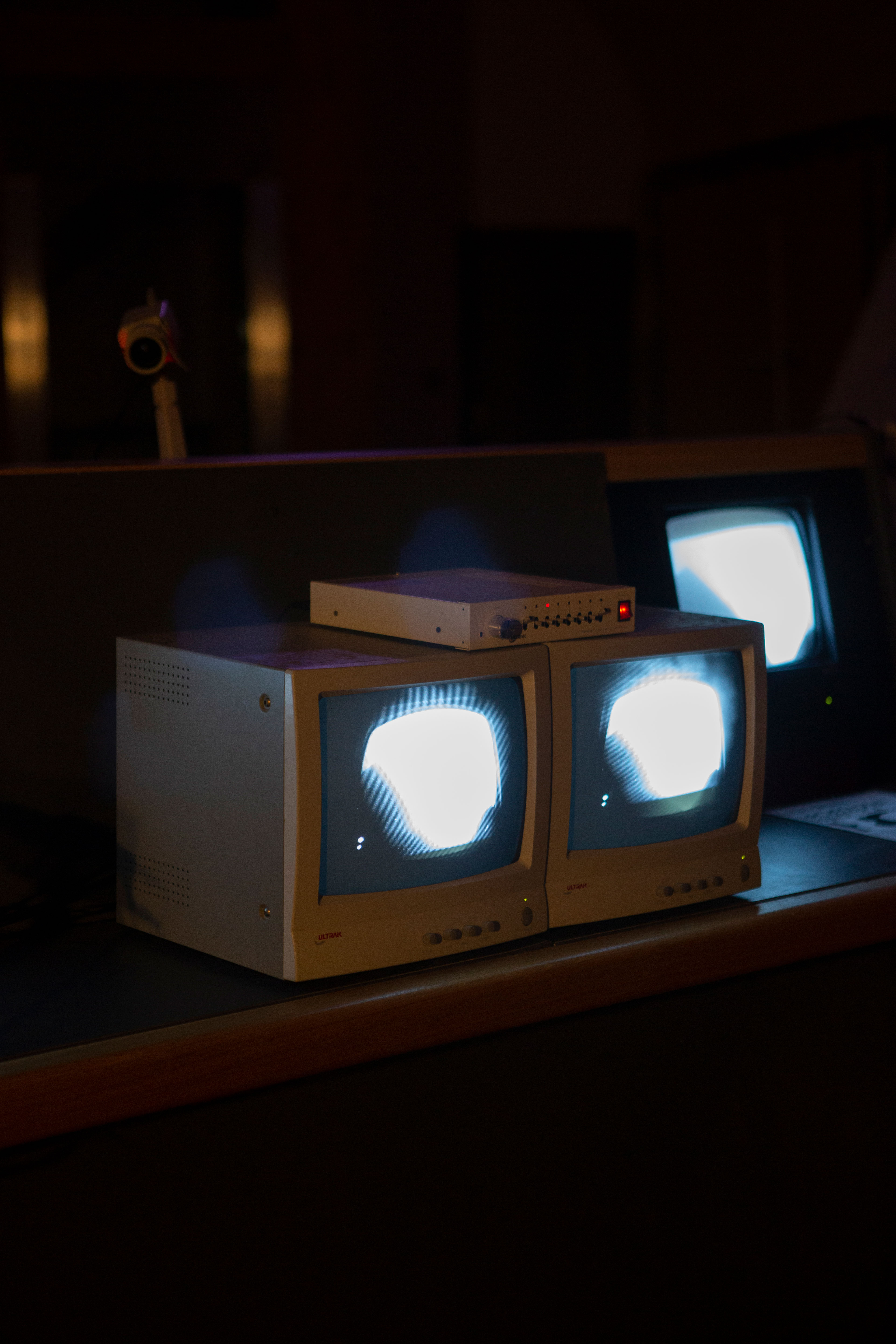


Archeologia Panottica (2023)
cctv cameras, surveillance furniture, crt tvs, analog switcher
Exhibited at con.divisione 12, mola di bari (IT)
Archeologia Panottica is a site-responsive video installation as part of a week-long residency in con.divisione. The work uses exclusively the surveillance equipment found in Castello Angionino, the medieval castle where the residency took place. Eight surveillance cameras are attached to a control station, their video feeds seen on TVs via a surveillance switcher. This switcher shows each camera one by one, with fixed intervals. One specific cctv camera films one screen and displays its output on two middle screens. The result is a surveillance of the surveilled.
Image credits: Aleksandra Kononchenko
The surveillance cameras are positioned in different angles, framing both the castle walls, and each other. When interacting with the artwork, the audience moves from surveilled to surveillors, by positioning themselves in front of the camera and/or watching the screens.
Installed in the 2000s, this surveillance network was left behind. The cameras were found with traces of time, exposed to rust, dust and microorganisms. Archeologia Panottica aims to reporpuse and restore the network, speculating on a setup that was barely used within the corridors of the castle.
The work questions the particular setup employed in the castle, and the purpose of surveillance in general. It engages the viewers to become aware of their behaviour as they are framed on the screens, enacting the panoptic principle. Simultaneously, it makes the audience wonder what have these cameras seen and experienced throughout the years.
Installed in the 2000s, this surveillance network was left behind. The cameras were found with traces of time, exposed to rust, dust and microorganisms. Archeologia Panottica aims to reporpuse and restore the network, speculating on a setup that was barely used within the corridors of the castle.
The work questions the particular setup employed in the castle, and the purpose of surveillance in general. It engages the viewers to become aware of their behaviour as they are framed on the screens, enacting the panoptic principle. Simultaneously, it makes the audience wonder what have these cameras seen and experienced throughout the years.
Further documentation



